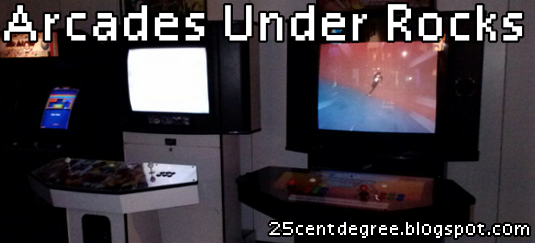The material culture reflects the normative culture. How the space is used is paramount to understanding the individuals and power structures within it. Within this study I investigated four specific locations in Ohio, gauging their authenticity in the eyes of the discourse, their demographics, how their space was used and what their ultimate connection to the different communities was.
Authenticity matters. Because the space plays a role in defining the values of the community, what really constitutes a legitimate arcade in the eyes of their audiences is an essential part of reading these spaces and the people around them. The arcade community avoids inauthentic spaces as contrary to their values. The Cincinnati Cinemark "Starcade" at the right is not a part of these values. It is a small, cramped space with only a few games designed to profit from consumers through its token system without facilitating a community as an actual arcade would. It is not recognized as having authenticity, and that makes it irrelevant to the discourse. If arcade goers do not value the space, the space is not a part of their interaction--thus, what may be billed as an arcade by its management or advertisers is not necessarily an "arcade arcade" according to community members.
This authenticity-based divide between what is marketed as an arcade and what actually constitutes one is integral to understanding the discourse because it brings to light a greater conundrum. What is and isn't arcade culture is not always clear because arcades are not one discourse. The spaces comprise groups of individuals with some overlapping values, but one group is unlikely to identify with another despite sharing the same space or a perceived connection by outsiders. Thus, another goal of this project is to define not just the spaces of Cincinnati and their communities, but also what constitutes arcade culture.
Although experimental, my approach is to do this with the rich media format of a web log. Arcades are a naturally rich media in their own right, the experience of arcade culture is framed around a visual medium, and just as blogs are a very recently emerged alternative media in academic writing, arcades are a relatively new object of research. The rules and mode of style that should comprise an academic blog is not clearly defined at this time, but it seems appropriate to treat a new object of study with a new medium of research. My intention is to use the different format in such a way that the individual pages can be digested in parts, in their entirety or on their own merits without having read preceding articles.
Index

